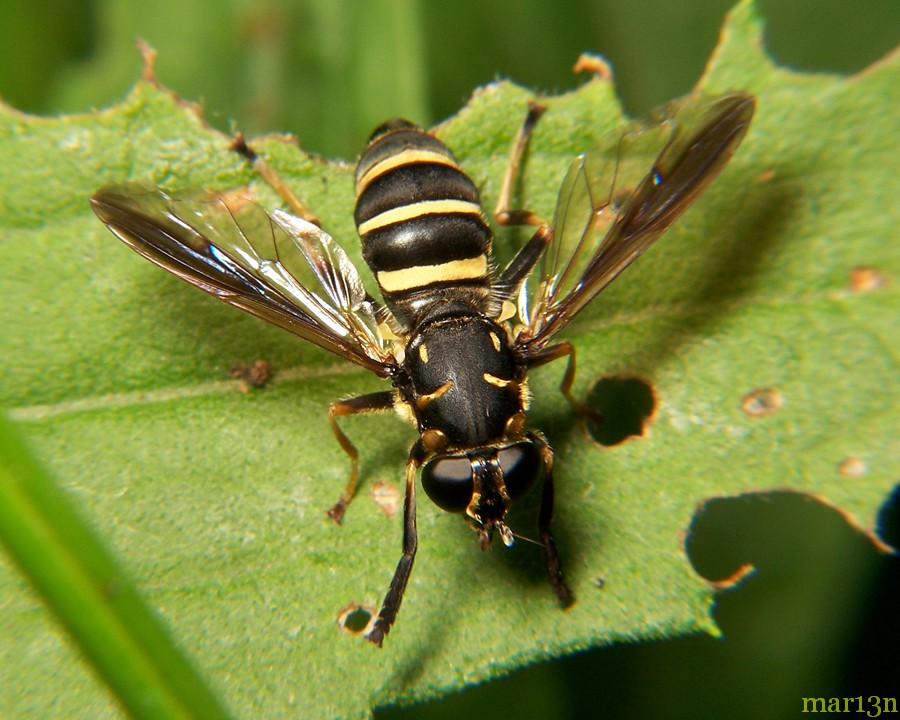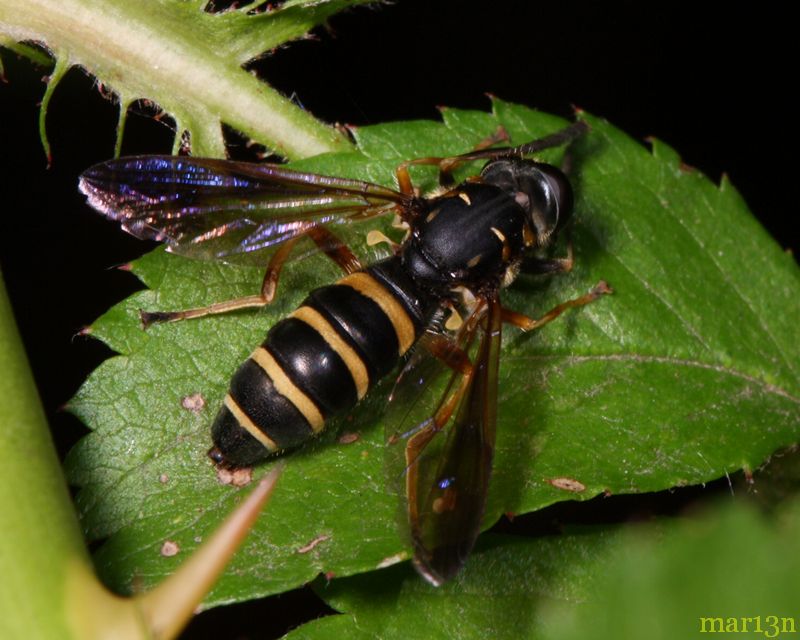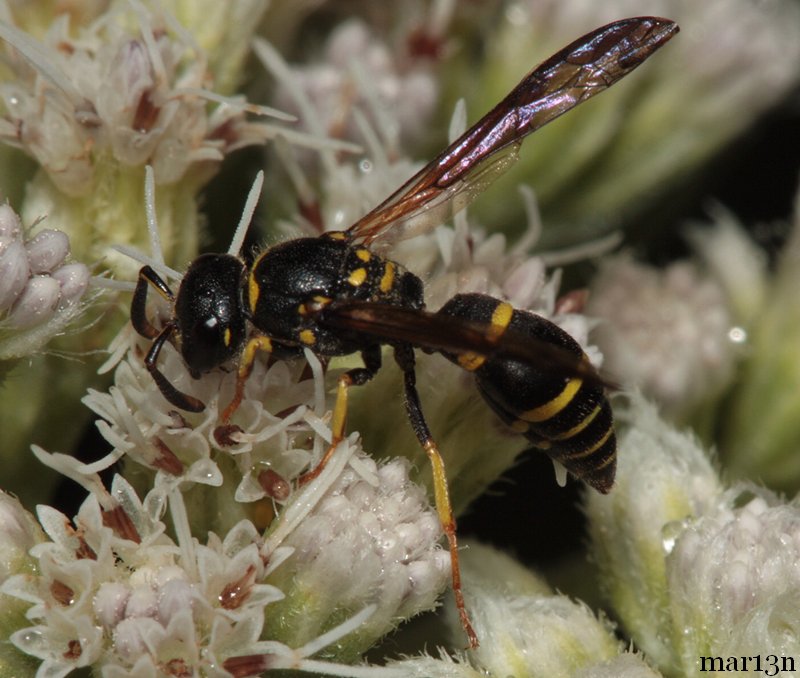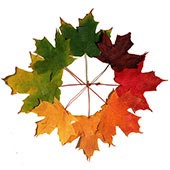Syrphid Fly – Temnostoma Species

The syrphidae are famous for their bee and wasp mimicry, but this fly goes the extra mile – it uses its front legs to mimic the jointed wasp antennae of the Vespids. When the fly lands, it hold its front legs up in front of its face and waves them about.

The effect is really quite convincing when you see one strike the pose. (The fly in the photos is doing it). Also, the clouded leading edge of the wing mimics wasp wings.

Compare to: Beewolf Wasp

